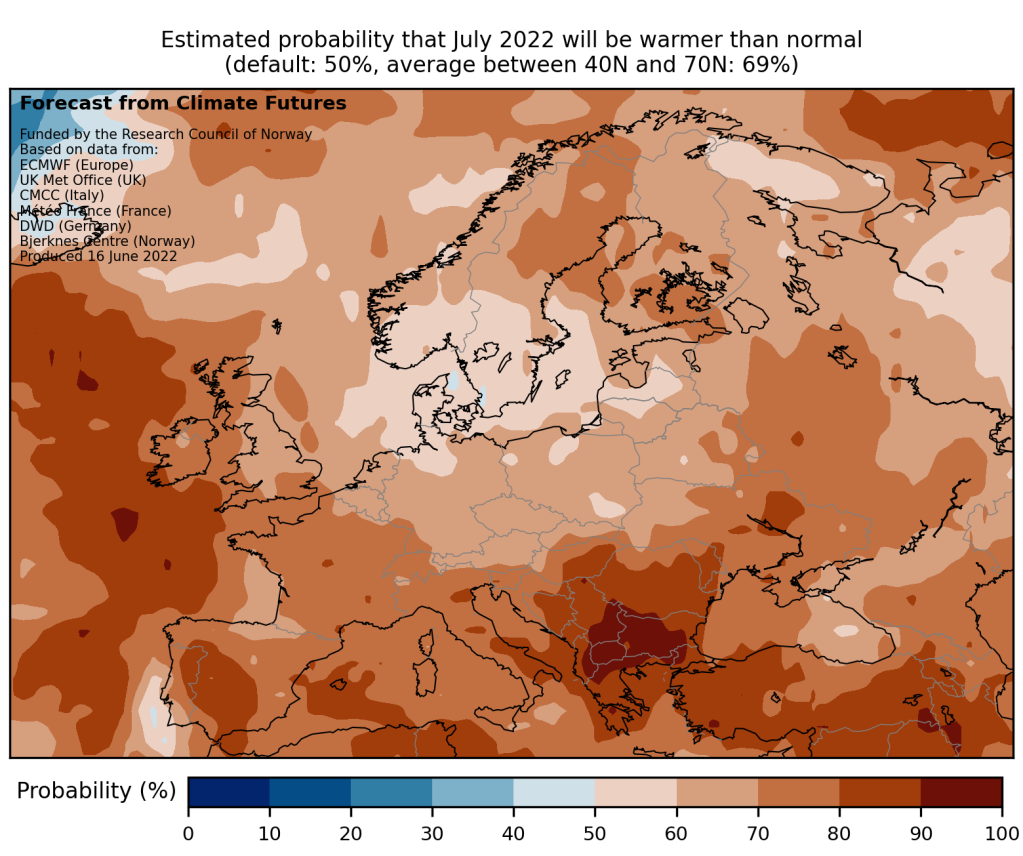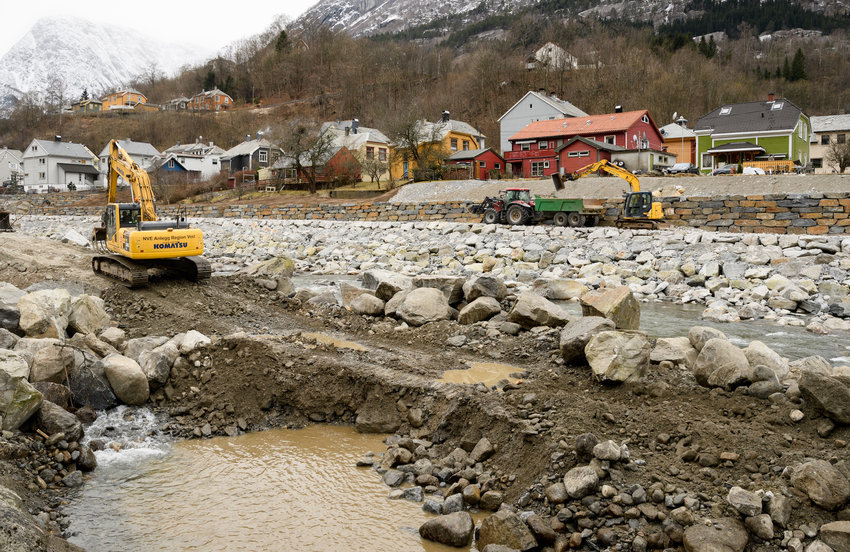Earlier this month, the seasonal forecast for this summer was released on klimavarsling.no, and for the first time, it includes our own model, NorCPM. This model is the result of many years of work on climate prediction.

When we create climate forecasts, we use a statistical model that builds upon historical weather observations from the past 30 years, in addition to over 200 scenarios from weather forecast models from six different centers: ECMWF in Europe, Met Office in the UK, CMCC in Italy, Météo France in France, DWD in Germany, and now, Norway’s very own model, NorCPM, developed by the Bjerknes Climate Prediction Unit (BCPU). Each of the models are computer programs that calculate probable weather tendencies based on an initial state. This is done by using advanced equations based on the fundamental laws of physics, fluid motion, and chemistry, that describe our climate. However, this can be done in different ways.
NorCPM (Norwegian Climate Prediction Model) is developed to make climate predictions on the long term, from seasons to decades, but also overlaps with the period on which Climate Futures focuses, that is, from ten days to a decade. NorCPM combines the Norwegian Earth System Model with a method for data assimilation called EnKF – The Ensemble Kalman Filter, a method that was originally developed at the Nansen Center, but which now has a broad user base. Read more about NorCPM here.
What makes NorCPM special compared to other models?
When a climate model runs, it divides the Earth into a grid and calculates what is happening in each pixel (of size 100 km) from the top of the atmosphere to the bottom of the ocean. The model thus simulates a weather state, but its calculations inevitably deviate from reality. Data assimilation thus is needed to correct the model’s simulations by synchronizing it with the actual observed climate variations. The EnKF used in NorCPM is an advanced data assimilation method that preserves important climate variables, such as ocean heat, salinity and sea ice volume when assimilating ocean and sea ice observations, which are important because they influence the climate over a long time. This gives a starting point for NorCPM to calculate all variables in each pixel in the future. This initialisation goes hand-in-hand with the ocean model of NorESM, which has a unique mathematical structure and is also meant to carry the ocean heat and salt variations forward intact.
The assimilation of the ocean and sea ice observations is well designed to synchronize the weather and climate from seasons to decades (S2D-seasonal-to-decadal), unlike other models that are meant for about 10 days to seasons (S2S-subseasonal-to-seasonal). Thus, NorCPM will reliably calculate the signals from the slow-varying ocean, while S2S models focus their efforts on atmosphere and land, which are changing faster. Using S2S and S2D models together gives a broader, more comprehensive picture of the possible outcomes of recent variations of the ocean, sea ice, land and atmosphere.
In order to include a new tool such as NorCPM in an established service like the one of Climate Futures, we first need to verify that its addition is worthwhile and that the new prediction portfolio is more reliable. Recently, a team from BCPU went through the exercise, and found that after including NorCPM, the predictions got better starting conditions and became more reliable 1 year ahead. Looking further out, it also improved the forecasts on a 2-5 year time scale and even 6-9 years ahead for Europe, North America and in the oceans (particularly the North Atlantic and the Nordic Seas). More about this study here.
NorCPM is already an important tool for Climate Futures, and we will elaborate on it to further improve the forecast accuracy by assimilating data in the atmosphere and land components of NorESM. Thanks to the researchers at the Nansen Center and the University of Bergen, including Tarkan Bilge, François Counillon, Ingo Bethke and Noel Keenlyside, for all the work they have put in to make this model available.
Here you can find the forecast for the summer, where this model is included for the first time.

